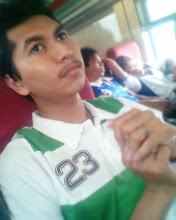How it works
The client-side/web browser technologies typically used in Web 2.0 development are Asynchronous JavaScript and XML (Ajax), Adobe Flash and the Adobe Flex framework, and JavaScript/Ajax frameworks such as Yahoo! UI Library, Dojo Toolkit, MooTools, and jQuery. Ajax programming uses JavaScript to upload and download new data from the web server without undergoing a full page reload.
To permit the user to continue to interact with the page, communications such as data requests going to the server are separated from data coming back to the page (asynchronously). Otherwise, the user would have to routinely wait for the data to come back before they can do anything else on that page, just as a user has to wait for a page to complete the reload. This also increases overall performance of the site, as the sending of requests can complete quicker independent of blocking and queueing required to send data back to the client.
The data fetched by an Ajax request is typically formatted in XML or JSON (JavaScript Object Notation) format, two widely used structured data formats. Since both of these formats are natively understood by JavaScript, a programmer can easily use them to transmit structured data in their web application. When this data is received via Ajax, the JavaScript program then uses the Document Object Model (DOM) to dynamically update the web page based on the new data, allowing for a rapid and interactive user experience. In short, using these techniques, Web designers can make their pages function like desktop applications. For example, Google Docs uses this technique to create a Web-based word processor.
Adobe Flex is another technology often used in Web 2.0 applications. Compared to JavaScript libraries like jQuery, Flex makes it easier for programmers to populate large data grids, charts, and other heavy user interactions.[22] Applications programmed in Flex, are compiled and displayed as Flash within the browser. As a widely available plugin independent of W3C (World Wide Web Consortium, the governing body of web standards and protocols), standards, Flash is capable of doing many things which are not currently possible in HTML, the language used to construct web pages. Of Flash's many capabilities, the most commonly used in Web 2.0 is its ability to play audio and video files. This has allowed for the creation of Web 2.0 sites such as YouTube, where video media is seamlessly integrated with standard HTML.
In addition to Flash and Ajax, JavaScript/Ajax frameworks have recently become a very popular means of creating Web 2.0 sites. At their core, these frameworks do not use technology any different from JavaScript, Ajax, and the DOM. What frameworks do is smooth over inconsistencies between web browsers and extend the functionality available to developers. Many of them also come with customizable, prefabricated 'widgets' that accomplish such common tasks as picking a date from a calendar, displaying a data chart, or making a tabbed panel.
On the server side, Web 2.0 uses many of the same technologies as Web 1.0. Languages such as PHP, Ruby, ColdFusion, Perl, Python, and ASP are used by developers to dynamically output data using information from files and databases. What has begun to change in Web 2.0 is the way this data is formatted. In the early days of the Internet, there was little need for different websites to communicate with each other and share data. In the new "participatory web", however, sharing data between sites has become an essential capability. To share its data with other sites, a web site must be able to generate output in machine-readable formats such as XML, RSS, and JSON. When a site's data is available in one of these formats, another website can use it to integrate a portion of that site's functionality into itself, linking the two together. When this design pattern is implemented, it ultimately leads to data that is both easier to find and more thoroughly categorized, a hallmark of the philosophy behind the Web 2.0 movement.
http://en.wikipedia.org/wiki/Web_2.0#How_it_works
